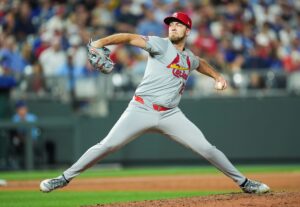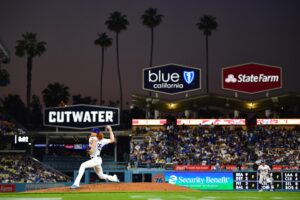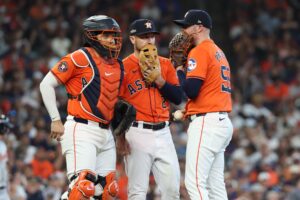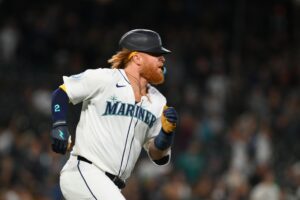February 2nd, 2008 was a day that many Minnesota Twins fans remember. On this day, the Twins traded their ace pitcher Johan Santana to the New York Mets in exchange for outfielder Carlos Gomez, and pitchers Deolis Guerra, Phillip Humber, and Kevin Mulvey. Looking back on this trade, one may wonder how it panned out on both sides. In the latest in our revisiting past trades series, this trade will be examined through what led up to the trade, the impact, and where the players are now.
Revisiting The Johan Santana Trade
The Cause
During the time before the trade, Johan Santana was a star for the Twins. He had just finished up another All-Star season, winning a Gold Glove in the process and finishing fifth in Cy Young Award voting during the 2007 season. However, contract negotiations had stalled with Santana over trying to get an extension to keep him in Minnesota. The Twins had been asked by Santana that if they were to trade him, to do it by that Tuesday. Santana did have a full no-trade clause in his contract, and the Mets were one of the teams that he would want to be traded to.
The Effect
Santana’s first order of business was signing a six-year, $137.5 million contract with the Mets. After signing the contract, his first season as a Mets pitcher was highly successful but cut short due to surgery to repair a torn meniscus. None the less, Santana would finish his first season in the Big Apple with a career-best 2.53 ERA, 206 strikeouts, and a 16-7 record. He would also go on to finish third in NL Cy Young Award voting that year. During the 2009 season, Santana would go 13-9 with a 3.13 ERA and 146 strikeouts.
During the 2010 season, Santana would bounce back, pitching an 11-9 record with a 2.98 ERA with 144 strikeouts. His last season with the Mets, and in MLB, was one to forget. In the 2012 season, after missing the 2011 season recovering from left shoulder surgery, Santana would have a 6-9 record with a 4.85 ERA and 111 strikeouts. However, during that season, Santana would etch his name into the history books as he threw the first no-hitter in Mets history against the St. Louis Cardinals on June 1st, 2012. His Mets career would finish with a 46-34 record, a 3.18 ERA, and 607 strikeouts.
The Return
Gomez’s first season with the Twins was a good season as he hit a .253 batting average, but his best statistic from that season was a career-best 33 stolen bases. Go-Go Gomez, as he was affectionately called by Twins fans, had a less productive season in 2009 hitting a .229 batting average with only 14 stolen bases. That would be his final year in Minnesota as he would be traded to the Milwaukee Brewers in exchange for shortstop J.J Hardy.
Guerra would never actually play for the Minnesota Twins as he was released by the team on November 5th, 2013. He would be brought back, but once again not make the big leagues.
Humber would pitch a total 20.2 innings with the Twins, with a 6.10 ERA over the course of two years. He would be released on October 6th, 2009.
Mulvey would only pitch 1.1 innings with the Twins, pitching a 27.00 ERA in that span. On September 1st, Mulvey would be sent to the Arizona Diamondbacks to complete the trade for pitcher Jon Rauch.
Final Thoughts
With all the trades that happened involving these players, as well as J.J Hardy getting traded out of Minnesota, this trade essentially boils down to Johan Santana for pitchers Brett Jacobson and Jim Hoey, and Jon Rauch. This trade was easily won by the Mets. Santana may have been in the decline of his career, but he was still able to pitch some very good years for the Mets, while almost every piece the Twins were acquired were no longer on the team after three years. This trade hurt Twins fans for a long time, but Santana was recently inducted into the Twins Hall of Fame, and fans knew it was well deserved.






